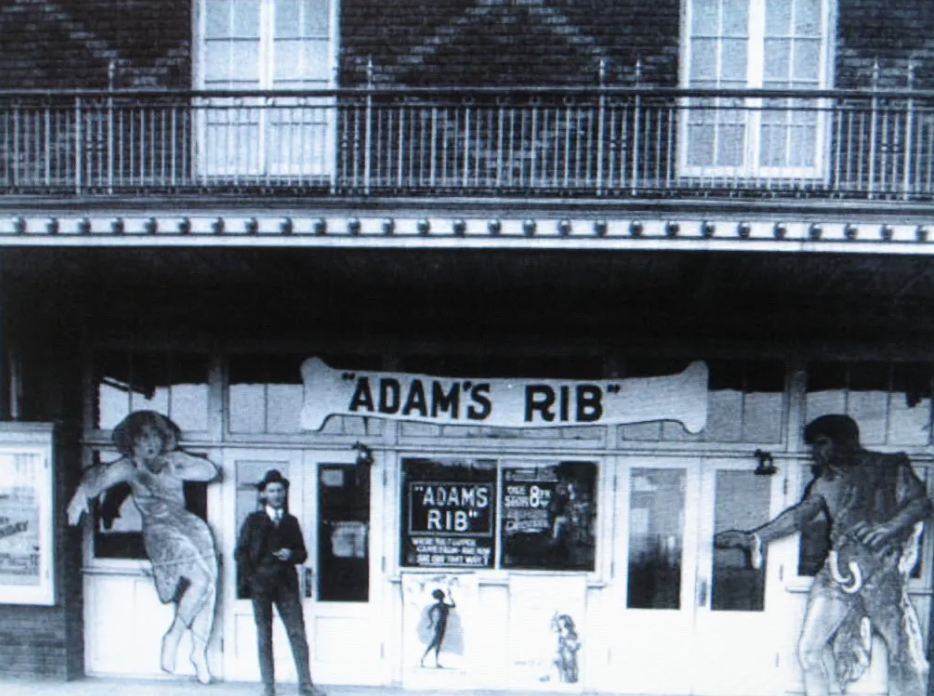
“A feller can stand jus’ so much — an’ I’m through standin’.” –Mickey Daniels in July Days (1923)
Richard Michael “Mickey” Daniels was born on October 11, 1914, in Reliance, Wyoming, to Richard and Hannah Reese Daniels. Per his draft card, his birthplace is listed as Reliance. He was one of eleven children in the family, with siblings Ruth, Clifford, Adele, Leonard, Louise, Elsie, Margaret, Sarah, Melvin, and Edgar. His father was of Welsh descent and had a background as a miner.
Daniels grew up in Rock Springs, Wyoming, where he was spotted at the Rialto Theatre during an amateur variety show. Gene Kornman, photographer and father of Our Gang player Mary Kornman, was a friend of the Daniels family and recommended freckled, red-haired Daniels as a possible addition to the cast.





Daniels was soon signed to the Our Gang series as one of the lead children, appearing in the shorts from 1922 through 1926. Daniels’s distinct laugh was featured in numerous Our Gang shorts and was also captured as a stock sound used throughout various other Hal Roach productions, namely dubbed in as an animal’s guffaw. He could also be spotted in various other Hal Roach films, even appearing alongside Harold Lloyd in Safety Last! (1923) and Girl Shy (1924). His father also appeared in several Our Gang shorts with him, in addition to Roach’s Girl Shy. His brother, Leonard worked for Roach in the studio’s transportation department.




When his time at Our Gang came to a close, he performed in vaudeville and also in a wide range of bit parts in feature films. In 1930, Daniels transitioned to The Boy Friends, produced by Roach featuring a cast of teenagers. The series of short subjects ended in 1932. He also carried out minor roles in It Happened One Night (1934); Magnificent Obsession (1935); and The Great Ziegfeld (1946), among other film roles. In 1932, his name appeared in several newspapers noting an engagement to Dorothy Mattice, which was called off.

By the 1950s, Daniels was no longer working in the film industry. His draft card states that his employer was “Louis Meyer, Inc.,” but this was crossed out to read “Kaiser Shipyards.” He worked in construction engineering. The card cites him as having a scar on his upper-left lip and also notes that he had a wife named Esther; additional sources point to him having a daughter named Diane.




After struggling to get roles, Daniels became disenchanted with Hollywood and depressed. He drank heavily during this period and gambled, while spending time living with his brother. He also took on several construction jobs overseas, participating in construction projects in Europe, Pearl Harbor, and Africa. His niece, Marlene Fund, remembered him as a fun uncle. She also recalled him partying and carousing at night, with him often getting kicked out of the house, as a result. In the mid-1960s he was traced in Tasmania working as a materials supervisor at an iron ore mine for the Bechtel Pacific Group under the name of Mike Daniels. By that time, he was divorced and his ex-wife, daughter, and grandson were all living in Los Angeles.

Beyond this point, Daniels was quite difficult to track. His childhood co-stars could not locate information about him for the documentary Our Gang: Inside the Clubhouse (1984), being unable to confirm a rumor that he had passed away overseas. Tragically, 21 years after his passing, details about his final years came to light. He returned to the states and lived in a San Diego, California, motel, working as a taxi driver for Red Top Taxi Cabs during his final three years. He passed away alone in the motel on August 20, 1970, from cirrhosis. His cremated remains went unclaimed during those 21 years until they were recovered and buried near his parents’ graves at Forest Lawn Memorial Park—Glendale in Glendale, California, in an unmarked grave. Film fan and retired educator Bob Satterfield raised money for a headstone in honor of Daniels, which was unveiled and dedicated on September 27, 2019.
Few tributes to Daniels exist today. The Rialto Theatre, where he was discovered, stood at 314S. Front St., Rock Springs, Wyoming. It has since been razed.


In the 1920s, the Daniels family resided at Ahsay Ave. in Rock Springs, Wyoming. This home has since been razed, though Ahsay Ave. remains. By 1930, the Daniels family relocated to 3911 ½ S. Harvard Blvd., Los Angeles, California. At this point, Daniels was already an actor. The home would remain in the family for years to come, as Daniels’ wife, Esther, is cited as living at this address in 1940. The home still stands today.

In 1940, Daniels was residing at 1213 N. Ainsworth Ave., Portland, Oregon, while he was working at the Kaiser Shipyards. This home also remains.

In 1950, he lived at 308 S. Holt St., Los Angeles, California, which no longer stands.
The most poignant tribute to him is the marker at his final resting place, thanks to funds contributed by the fans that enjoyed his on-screen performances.







